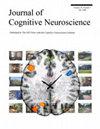猕猴的功能磁共振成像和因果药理失活揭示了注意力捕捉面孔的可能神经基础
IF 3.1
3区 医学
Q2 NEUROSCIENCES
引用次数: 0
摘要
在灵长类动物中,视觉场景中出现的人脸会吸引注意力,并迅速将观察者的视线引向该人脸,即使该人脸与当前任务无关。在这里,我们探索了可能在这一强大行为中扮演因果角色的神经回路。在我们之前的研究中,两只猴子分别接受了麝香草酚(一种 GABAA 受体激动剂)或生理盐水(作为对照条件)的微量注射,将其注射到单独或成对的四个颞下部脸部斑块(中、前外侧和眼底)中。然后,我们使用 fMRI 测量了相对于对照条件,每个失活条件对其他面部斑块反应的影响。在本研究中,我们使用了相同的方法,测量了在观看人脸和非人脸物体刺激时,每种失活条件对 FEF 和侧顶内区(与注意加工相关的两个区域)反应的影响。我们的研究结果揭示了颞下人脸补丁与这两个注意力相关区域之间的潜在关系:中外侧和前眼底人脸贴片的失活对 FEF 有明显的影响,而中外侧和前外侧人脸贴片的失活则可能对侧顶内区有明显的影响。总之,这些初步的探索性发现记录了一个潜在的电路,它可能是人脸注意捕捉的基础。这一回路的作用还有待在明确测试注意力捕捉面孔的范式中加以确认。本文章由计算机程序翻译,如有差异,请以英文原文为准。
A Possible Neural Basis for Attentional Capture of Faces Revealed by Functional Magnetic Resonance Imaging and Causal Pharmacological Inactivation in Macaques
In primates, the presence of a face in a visual scene captures attention and rapidly directs the observer's gaze to the face, even when the face is not relevant to the task at hand. Here, we explored a neural circuit that might potentially play a causal role in this powerful behavior. In our previous research, two monkeys received microinfusions of muscimol, a γ-aminobutyric acid type A (GABAA)-receptor agonist, or saline (as a control condition) in separate sessions into individual or pairs of four inferotemporal face patches (middle and anterior lateral and fundal), as identified by an initial localizer experiment. Then, using fMRI, we measured the impact of each inactivation condition on responses in the other face patches relative to the control condition. In this study, we used the same method and measured the impact of each inactivation condition on responses in the FEF and the lateral intraparietal area, two regions associated with attentional processing, while face and nonface object stimuli were viewed. Our results revealed potential relationships between inferotemporal face patches and these two attention-related regions: The inactivation of the middle lateral and anterior fundal face patches had a pronounced impact on FEF, whereas the inactivation of the middle and anterior lateral face patches had a noticeable influence on LIP. Together, these initial exploratory findings document a circuit that potentially underlies the attentional capture of faces. Confirmation of the role of this circuit remains to be accomplished in the context of a paradigm that explicitly tests the attentional capture of faces.
求助全文
通过发布文献求助,成功后即可免费获取论文全文。
去求助
来源期刊
CiteScore
5.30
自引率
3.10%
发文量
151
审稿时长
3-8 weeks
期刊介绍:
Journal of Cognitive Neuroscience investigates brain–behavior interaction and promotes lively interchange among the mind sciences.

 求助内容:
求助内容: 应助结果提醒方式:
应助结果提醒方式:


